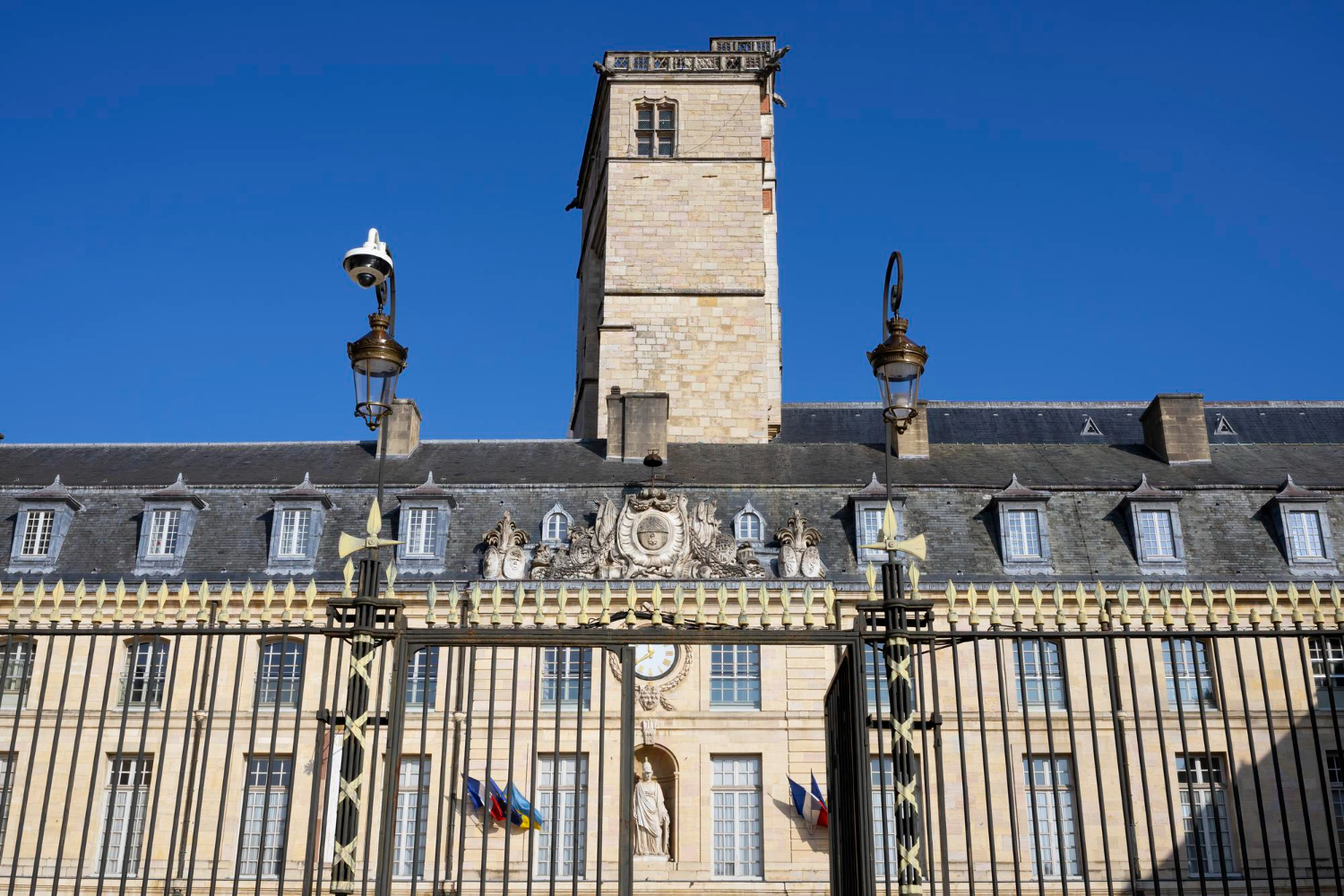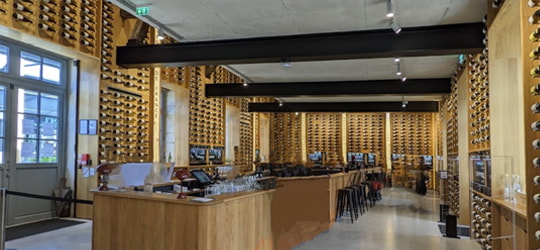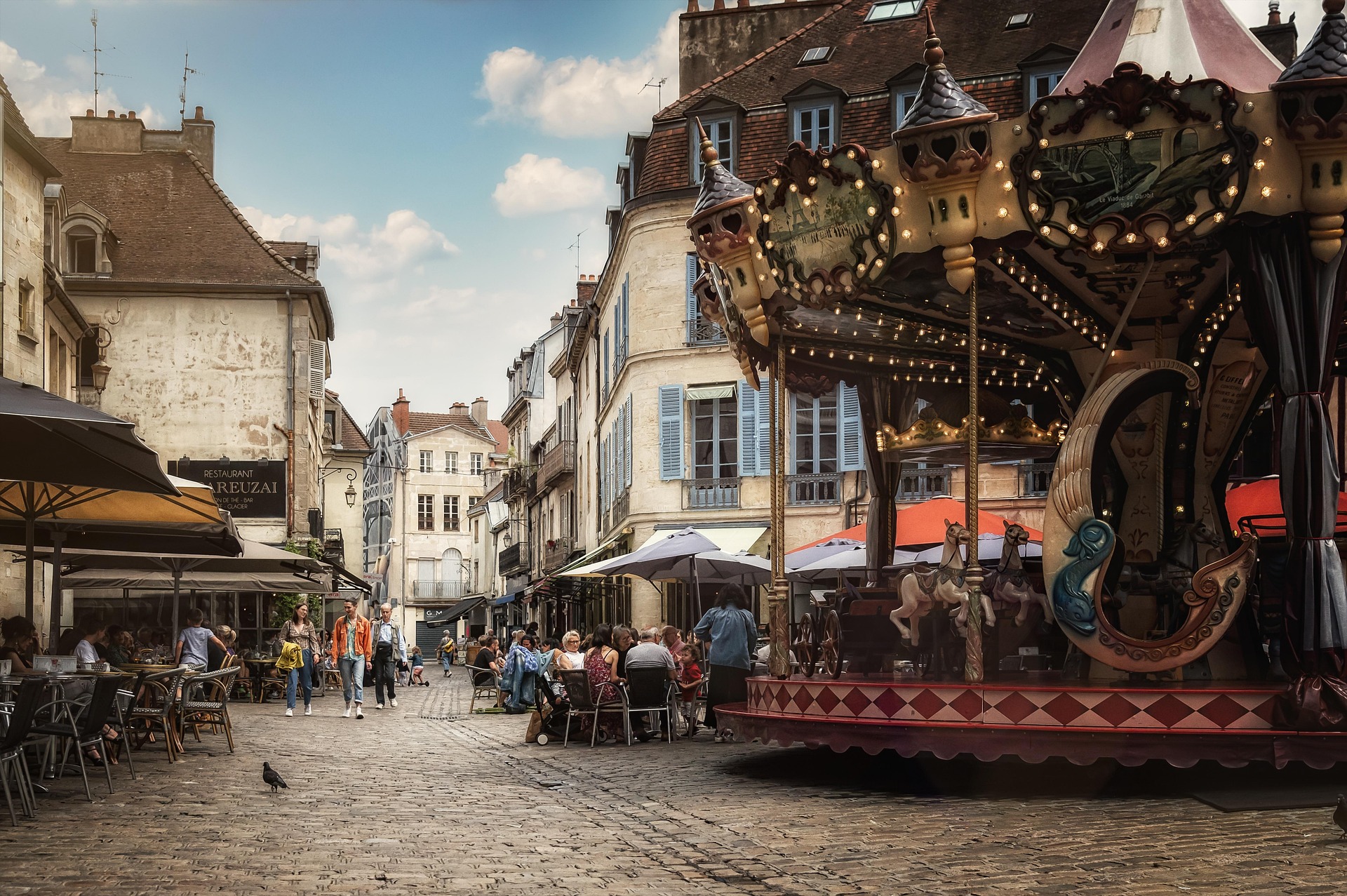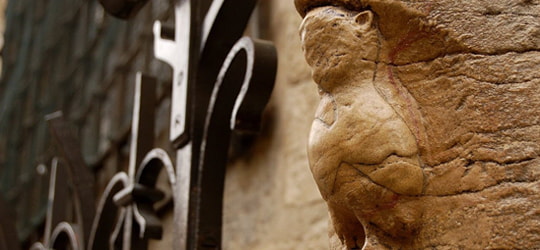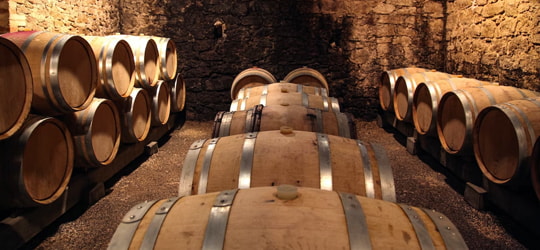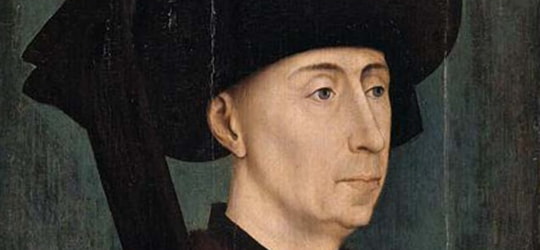Tourism in Burgundy Franche-Comté
Must-sees in Burgundy
What to do, what to see, what to visit?
Climbing the Tour Philippe le Bon
Built in the center of the Palace of the Dukes of Burgundy, the trapezoidal tower built in the 15th century has a spiral staircase with 316 steps. But don’t worry, we don’t climb all the steps at once! The first three levels of the seven floors of the tower distribute the different levels of the former ducal residence. Above are the ceremonial rooms which had no other purpose than to show the power of the Dukes of Valois.
The stop at the 199 th step allows you to catch your breath in front of a small wooden door surmounted by a double brace. I notice a curious bat carved at the corner of the wall … It must probably watch over the tombs of the dukes of Burgundy who rest just behind the door!
The staircase presents a sculpted decoration which is enriched as one climbs the steps: plant ornaments, high-relief depicting the builders of the tower, lighters and flints which are the emblems of Philip the Good. I stood in awe of the magnificent ribbed vault over the final landing.
What is a wine tour in Burgundy?
The wine tour is a turnkey tour offered by agencies specialized in wine tourism. Discovering an estate with a winegrower, a guided walk in the heart of the vineyards, wine tasting and an introduction to oenology are the essential activities of a guided tour in the Burgundy vineyards.
You will find in Dijon, different tour operators specialized in accompanying small groups for a day or several days such as Authentica Tours, Wine & Voyages, Bourgogne Gold Tour or Active Tours.
Excursions in the vineyard are offered all year round, by minibus, by car or even by bike! You can also take advantage of a tailor-made wine tour with a private driver, to discover the Burgundy vineyards together.
The must-see monuments of Dijon
The architecture of the Middle Ages can be discovered in Dijon through its great religious buildings which abound in the “city of a hundred steeples”. The Romanesque church of Saint-Philibert and the two Gothic icons, Notre-Dame and the cathedral of Sainte-Bénigne, are among the most beautiful sacred places in the Burgundian city.
The most emblematic monument of Dijon remains without a doubt the majestic palace of the Dukes and States of Burgundy. The first duke of the Valois, Philippe le Hardi, rebuilt it from 1365 and transformed the hall of the States into a real palace. This one metamorphoses over the centuries with the classical facades designed by Jules-Ardouin Mansart, the architect of Louis XIV. Now the city hall, it also houses the prestigious Musée des Beaux-Arts and the dukes’ tombs.
The old Dijon offers the visitor a 97-hectare protected area in which three thousand houses and nearly two hundred historical monuments rub shoulders with the nature of squares and gardens in the neoclassical style. The panoramic view from the Philippe le Bon tower allows you to admire this unique monumental heritage from the top of the 46 meters of the ducal terrace.
Dijon’s art of living
The reclamation of pedestrian areas around the Place de la Libération, the introduction of self-service bicycles and the development of two tramway lines promote the art of living in the Burgundian capital.
Around the flagship products of Dijon’s gastronomy, such as mustard, gingerbread and blackcurrant, visits to artisanal factories where stories and tastings are combined are developing.
The Halles de Dijon brunch, the tastings in an unusual place during the “Jeudis Vins” or the “apéritifs de la tour” contribute to the influence of Dijon’s culinary art. On May 6, 2022, the Cité Internationale de la Gastronomie et du Vin opened its doors with the creation of a real district in the center of Dijon. Alongside the cities of Tours, Lyon and Paris-Rungis, the city of Dijon will promote “Le repas gastronomique des Français®” and more particularly Les Climats du vignoble de Bourgogne.
